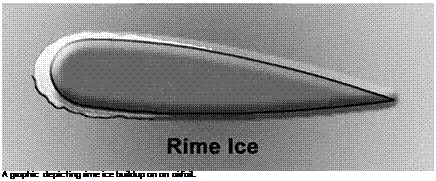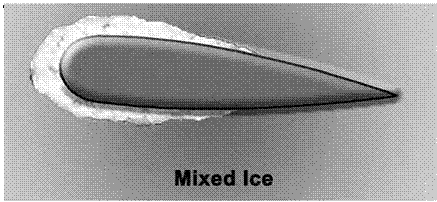Baby, It’s Cold Out There
Not surprisingly, ice buildup on aircraft is bad. If it happens on the ground, then pilots and passengers alike must wait for the ice to be removed, often with hazardous chemicals and usually resulting in flight delays that can trigger a chain reaction of schedule problems across the Nation’s air system. If an aircraft accumulates ice in the air, depending on the severity of the situation, the results could range from mild annoyance that a de-icing switch has to be thrown to complete aerodynamic failure of the wing, accompanied by total loss of control, a spiraling dive from high altitude, a premature termination of the flight and all lives on board, followed by the reward of becoming the lead item on the evening news.
Icing is a problem for flying aircraft not so much because of the added weight, but because of the way even a tiny amount of ice can begin to disrupt the smooth airflow over the wings, wreaking havoc with the wing’s ability to generate lift and increasing the amount of drag, which
slows the aircraft and pitches the nose down. This prompts the pilot to pull the nose up to compensate for the lost lift, which allows even more ice to build up on the lower surface of the wing. And the vicious circle continues, potentially leading to disaster. Complicating the matter is that even with options for clearing the wing of ice—discussed shortly— ice buildup can remain and/or continue on other aircraft surfaces such as antennas, windshields, wing struts, fixed landing gear, and other protrusions, all of which can still account for a 50-percent increase in drag even if the wing is clean.[1218]
![]() From the earliest experience with icing during the 1920s and on through the present day, researchers have observed and understood there to be three primary categories of aircraft ice: clear, rime, and mixed. Each one forms for slightly different reasons and exhibits certain properties that influence the effectiveness of available de-icing measures.[1219]
From the earliest experience with icing during the 1920s and on through the present day, researchers have observed and understood there to be three primary categories of aircraft ice: clear, rime, and mixed. Each one forms for slightly different reasons and exhibits certain properties that influence the effectiveness of available de-icing measures.[1219]
Clear ice is usually associated with freezing rain or a special category of rain that falls through a region of the atmosphere where temperatures are far below the normal freezing point of water, yet the drops remain in a liquid state. These are called super-cooled drops.
 |
Such drops are very unstable and need very little encouragement to freeze. When they strike a cold airframe they begin to freeze, but it is
not an instant process. The raindrop freezes as it spreads out and continues to make contact with an aircraft surface whose skin temperature is at or below 32 degrees Fahrenheit (0 degrees Celsius). The slower the drop freezes, the more time it will have to spread out evenly and create a sheet of solid, clear ice that has very little air enclosed within. This flow – back phenomenon is greatest at temperatures right at freezing. Because of its smooth surface, clear ice can quickly disrupt the wing’s ability to generate lift by ruining the wing’s aerodynamic shape. This type of ice is quite solid in the sense that if any of it does happen to loosen or break off, it tends to come off in large pieces that have the ability to strike another part of the aircraft and damage it.[1220]
![]()
 |
Rime ice proves size makes a difference. In this case the supercooled liquid water drops are smaller than the type that produces
clear ice. When these tiny drops of water strike a cold aircraft surface, most of the liquid drops instantly freeze and any water remaining is not enough to create a sheet of ice. Instead, the result is a brittle ice that looks milky white, is opaque, has a rough surface due to its makeup of ice crystals and trapped air, and doesn’t accumulate as quickly as clear ice. It does not weigh as much, either, and tends to stick to the leading edge of the wing and the cowl of the engine intakes on a jet, making rime ice just as harmful to the airflow and aerodynamics of the aircraft.[1221]
Naturally, when an aircraft encounters water droplets of various sizes, a combination of both clear and rime ice can form, creating the
 |
|
third category of icing called mixed ice. The majority of ice encountered in aviation is of this mixed type.[1222]
Aircraft must also contend with snow, avoiding the wet, sticky stuff that makes great snowballs on the ground but in the air can quickly accumulate not only on the wings—like ice, a hazard in terms of aerodynamics and weight—but also on the windshield, obscuring the pilot’s view despite the best efforts of the windshield wipers, which can be rendered useless in this type of snow. And on the ground, frost can completely cover an aircraft that sits out overnight when there is a combination of humid air and subfreezing temperatures. Frost can also form in certain flying conditions, although it is not as hazardous as any of the ices.[1223]










